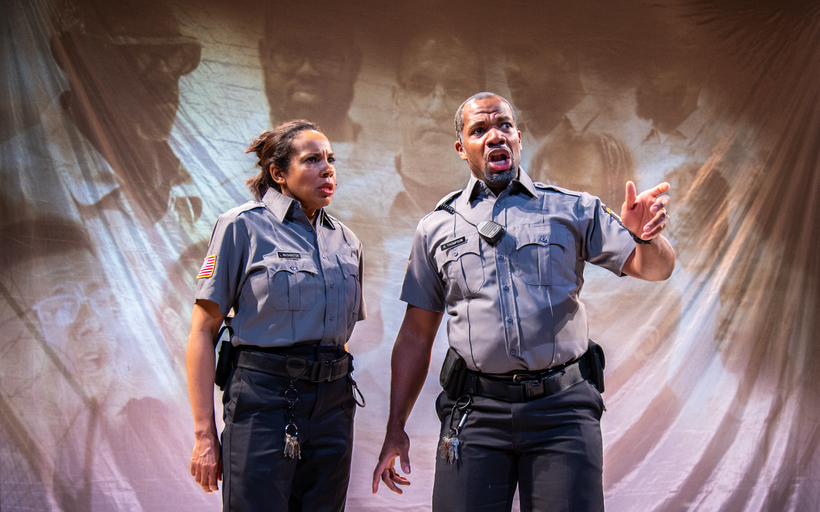The sketchier a scenario, the easier for future interpreters to repurpose it to their own ends. Small wonder that Heartbeat Opera—a company as vocal about equity, diversity, inclusion, and anti-racism as it is about the art form it practices—has pounced on Fidelio, converting Beethoven’s paean to freedom and universal brotherhood to an indictment of racial injustice in #BLM America.
First mounted in 2018, Heartbeat’s Fidelio returned last winter, played both coasts, and was preserved live on video, looking more pulled-together than it did onstage. As online viewers can see, the contours of the piece are largely intact. An activist named Stan (for Beethoven’s Florestan) has spoken truth to power and disappeared without a trace. His nemesis Pizarro is slowly starving him to death in a secret dungeon.
The curtain rises, and we meet Stan’s wife Leah (formerly Leonore), who has gone undercover disguised as a youth in hopes of finding and springing him. Providentially she has fetched up in the right prison, found custodial work there, and even caught the fancy of the warden’s daughter Marcy (for Marzelline). Heartbeat dispenses with the cross-dressing, but Marcy falls for the new kid on the cell block just the same, and Dad’s totally cool with that. If that’s the first of Heartbeat’s major liberties, the downbeat ending—despondent disillusionment in place of triumph—is the last and most radical.

Also radical, from a purely musical point of view, is the conductor Daniel Schlosberg’s reduction of Beethoven’s symphonic orchestra to a band consisting of two pianos, two horns, two cellos, and percussion—not a woodwind in sight! Mimicking the contour and attacca of a score might not be such a trick. But Schlosberg’s singular combo also manages to hint at the subtexts Beethoven conveys with his infinitely broader instrumental palette. There’s wizardry in that.
In the theater, the production’s takeaway moment was the Prisoners’ Chorus, written for men emerging into sunlight for the first time since God knows when, dazed with muted joy. But where, you ask, is a vest-pocket outfit like Heartbeat going to get a chorus?
The answer: in actual prisons. We hear the recorded voices of 100 incarcerated men and women as well as 70 volunteers, and we see their faces. Who are they? Why are they where they are? We have no way of knowing. But in the world of Beethoven’s ideals, compassion is a categorical imperative. The anonymous choristers’ untrained voices, unpretentious and sincere, along with the earnest concentration to be seen on row after row of their faces, drive home his message.
The composer of the Ninth Symphony and of the Missa Solemnis could have had no quarrel with the Heartbeat ethos. The diversity stats for the production, as nearly as I can determine, are as follows. In an otherwise Black cast of five, the villain is a white male. The melting-pot chorus all too plainly reflects America’s sorry record of disproportionately incarcerating the undereducated, the marginalized, the poor. Of the seven instrumentalists—four men and three women—three are white, two Black, and two Asian. Among the singers, the charismatic tenor Curtis Bannister stands out for presence, voice, and musicality; watch for him this fall in Black Panther: Wakanda Forever.
Fidelio streams on the Heartbeat Opera Web site beginning October 11
Matthew Gurewitsch writes about opera and classical music for AIR MAIL. He lives in Hawaii

